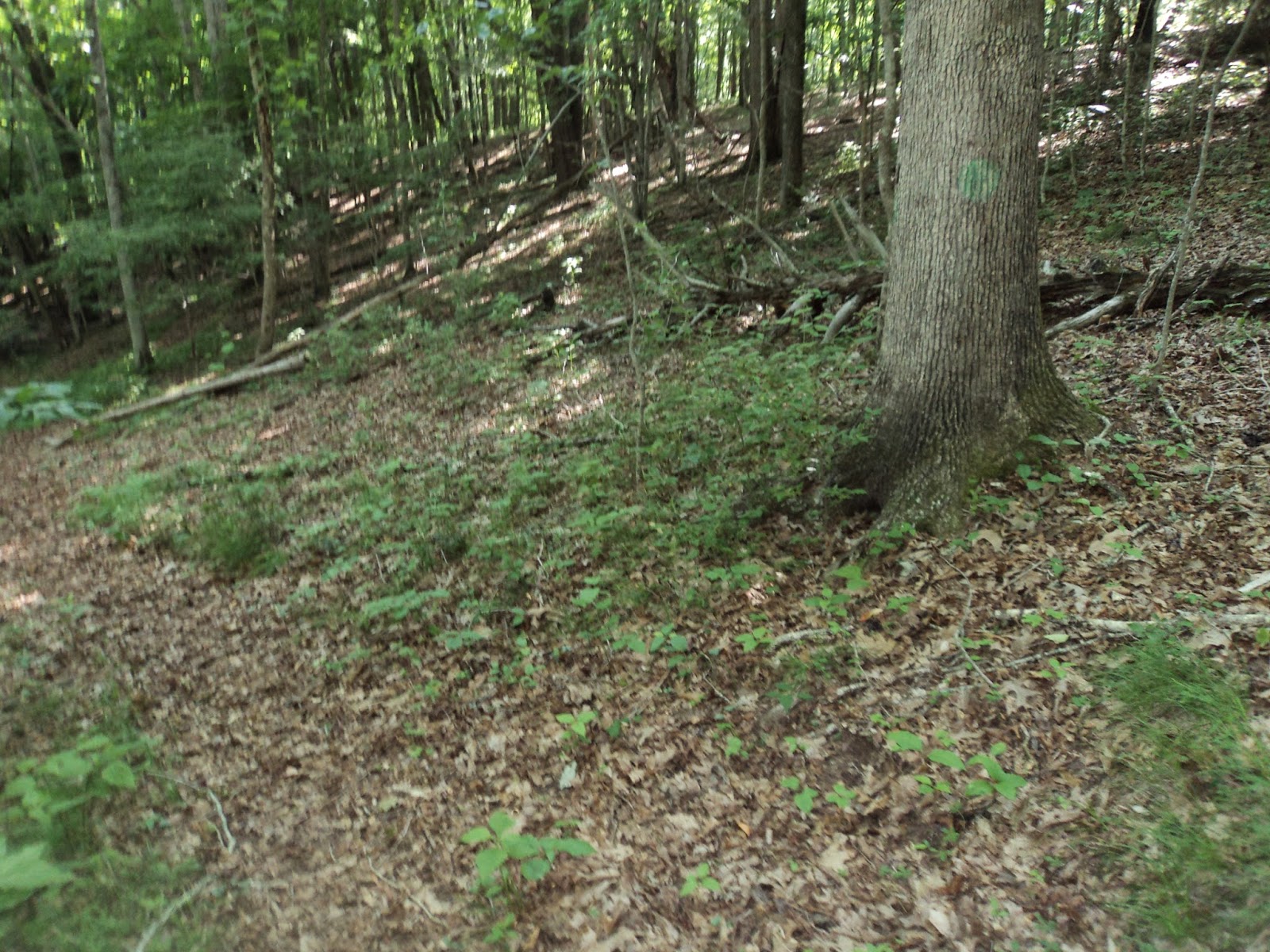Trail: Dogwood Trail
Hike Location: Pipestem
Resort State Park
Geographic Location: northeast of Princeton , WV (37.52548, -80.98915)
Length: 0.7 miles
Difficulty: 3/10 (Easy/Moderate)
Last Hiked: June 2014; trailhead pic taken July 2017
Overview: A short after-dinner nature trail.
Park Information: https://wvstateparks.com/park/pipestem-resort-state-park/
Directions to the trailhead: From I-77, take exit 14
and follow signs to SR 20. Turn left on
SR 20 and drive north 9.3 miles to the park entrance. Turn left to enter the park. Drive the main park road 1.6 miles to the
parking area for the Nature Center Nature Center
The hike: Consisting of 4050 acres in and around the Bluestone
River West
Virginia , Pipestem
Resort State Park West Virginia ’s
state park system. The park’s name comes
from the locally common meadowsweet plant, the hollow stem of which was
historically used to make tobacco and other pipes. Perhaps the park’s most famous feature is its
aerial tramway, which takes visitors down 1100 feet to the bottom of the gorge.
The park
has 2 lodges: Mountain Creek Lodge and McKeever Lodge. Mountain Creek Lodge sits in the gorge next
to the river; it is accessible only by trail or the tramway. McKeever Lodge sits on the canyon rim and
offers several gorge view rooms, one of which housed me for two nights. An 82-site campground and 26 cabins round out
the park’s lodging options. In terms of
other amenities, the park boasts two golf courses, a regulation course and a
short par-3 course, tennis courts, picnic shelters, a recreation center
featuring disc golf among other things, 20 hiking trails, and the Nature
Center
My long hike at Pipestem is
described in the next blog entry, but the night before my long hike I chose to
hike the short Dogwood Trail described here.
The Nature Center 12:30
to 4:30 , but it has an excellent
bird-viewing window. I sat in a rocking
chair beside the window for about 30 minutes and saw several goldfinches,
several house finches, a woodpecker, a mourning dove, and some titmice among
other birds.
 |
| Start of Dogwood Trail |
The trail
continues climbing on a gradual grade and comes out beside the main park
road. Rather than crossing the road, the
trail stays about 10 feet below road level on the west side of the road, as
directed by trail signs. Daisies grow on
the roadside bank in season.
 |
| Daisies beside the park road |
At 0.25
miles, the trail curves left to follow an old dirt road as it descends away
from the main park road. 2 minutes
later, another sign directs you to turn left and leave the old road. The balance of the trail climbs and descends
repeatedly. At 0.45 miles, a
particularly steep climb and descent makes you wonder if a masochist built this
trail. The descent takes you beside the
bottom of some low rock outcrops, thus easing your fears.
 |
| Hiking the Dogwood Trail |
You pass
the other side of the frog pond as you approach the end of the loop. At 0.6 miles, the County Line Trail and horse
trail enter from the right. 100 feet
later, turn right to enter the grassy area behind the Nature
Center Nature
Center
















